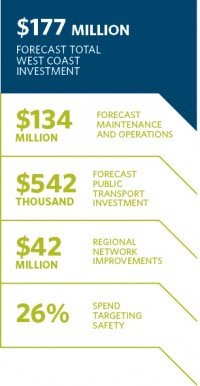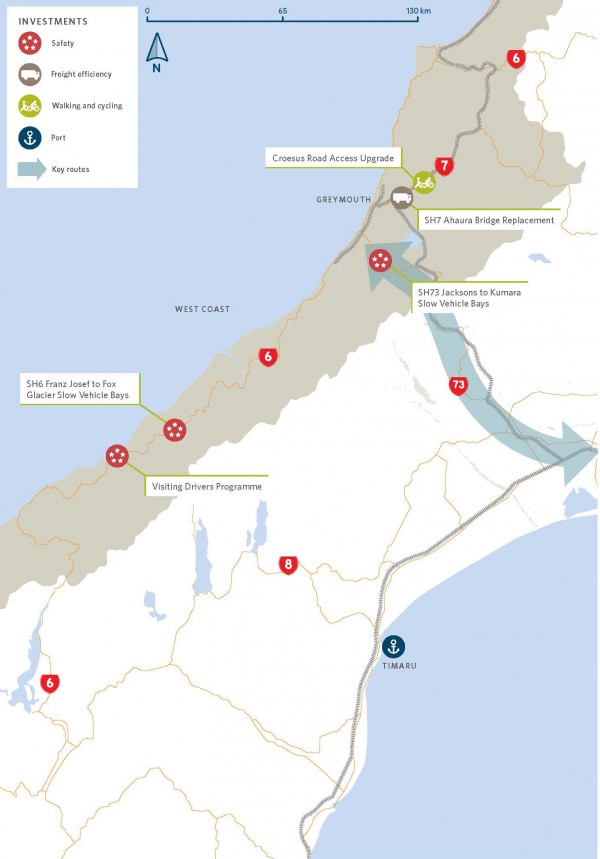
Building resilience into the state highway network remains the focus for investment in the West Coast’s transport system to ensure the region’s main economic driver, tourism, continues to flourish. Tourism is now the fastest growing economy for the region and relies on safe, reliable access.
SH6, running the length of the region, forms a critical lifeline link between the region’s communities, as well as providing access to the key tourism attractions, such as Franz Josef and Fox Glaciers, Punakaiki and various walking and cycling trails. However, the highway is prone to closures from slips, rock falls, flooding and crashes. These closures not only disrupt the travel of customers but also have a significant impact on the economy.
There are no viable alternative routes when SH6 is closed; and where there are detours, these are lengthy and often on unsealed local roads. Almost half the local roads on the West Coast are unsealed.
With the West Coast’s relative isolation, the result of its few connections to neighbouring regions and its challenging geographical environment, a resilient network is vital to support economic and social opportunities within the region. Safe, reliable routes are required to the north, south and east of the West Coast as tourists often travel around the South Island and come into the region from each of three access points.
Throughout the next three years, the Transport Agency will continue to work with local government and the Franz Josef community to improve resilience of the town and the transport network that provides a vital link for West Coast tourism. Both SH6 and the town of Franz Josef are located on the Alpine Fault and are prone to flooding by the Waiho River during significant weather events. This is the result of continual changes in the water channels of the heavily braided riverbed, running along the southern edge of the tourist town.
 Access
AccessResilience work is planned for the highway network on the West Coast during this three-year NLTP period to help reduce the number of closures and minimise disruption for customers from unplanned events, in particular weather-related incidents. On SH6, SH7 and SH73, work is focused on helping prevent slips and rock fall at a number of known susceptible locations.
On SH7, a key freight route from the north, it is proposed to replace the single-lane wooden Ahaura Bridge with a new two-lane bridge and realign the highway.
Upgrading this bridge is part of an overall programme of work to improve freight connections to enable HPMV and 50MAX vehicles to access the region’s primary produce and get goods to markets in the most cost-effective and efficient way.
With the Department of Conservation and Buller District Council, the Transport Agency is developing a plan to improve parking and pedestrian access to the iconic pancake rocks and blowhole at Punakaiki, and with the Grey District Council, Development West Coast and MBIE to improve the transport link between Blackball township and the start of the Paparoa Track.
In this NLTP period, $134 million will be spent on maintenance and renewals along West Coast highways to improve both resilience and safety to support economic development.
Much of the work is focused on improving roads and roadsides at high-risk locations throughout the region.
Work will also focus on progressing the region’s speed management plan to improve safety for both residents and visiting drivers.
Support will continue for regional walking and cycling trails where there are opportunities to grow tourism and support the visitor economy.
This includes the Croesus Trail, 10kms of which forms part of the 55km track through the Paparoa mountain range, linking the villages of Blackball and Punakaiki. The Paparoa Track has been given Great Walk status, making it one of the premier outdoor experiences in New Zealand. It is the first new track to be added to the Great Walk network since it was setup in 1993 and the first to be built for both walkers and mountain bikers.